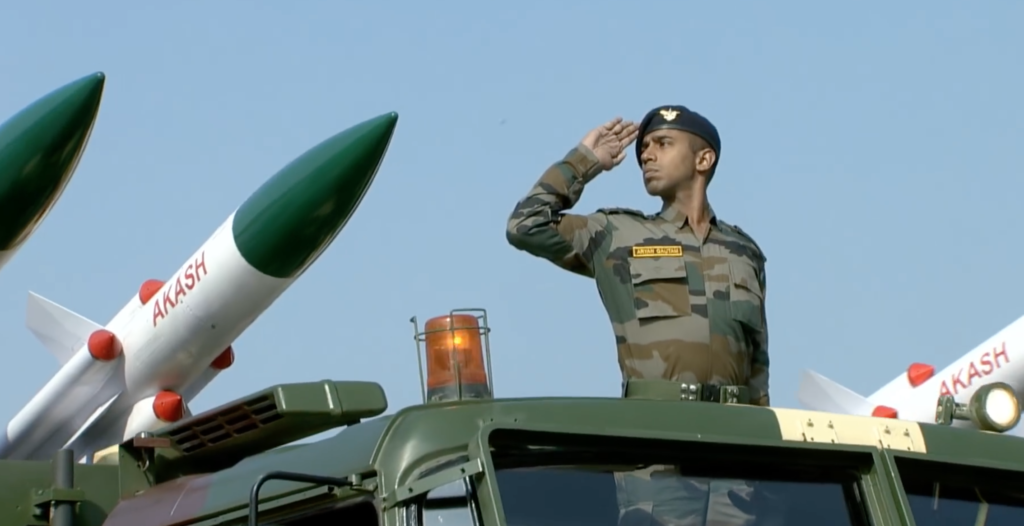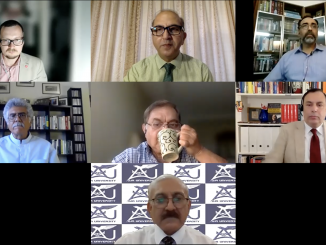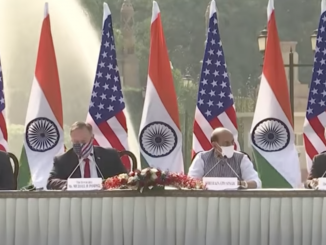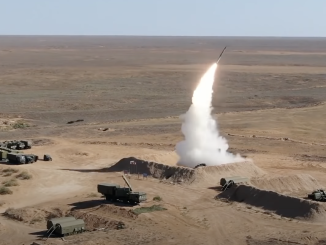
When the first shouted word of Pakistan’s nuclear tests were heard in the Indian Parliament on May 28, 1998, a communist leader, Somnath Chatterjee, interrupted a speech condemning India’s tests and turned directly to Prime Minister Atal Bihari Vajpayee, the nationalist leader who had approved the Indian tests and said, “You have started a nuclear arms race in this region.”
In subsequent decades, while Pakistan has shown all the necessary restraint and responsibility, the Indian side has been intent on instigating a nuclear as well as conventional arms race in the region with their posturing and acquisitions. Interestingly, Indian acquisitions, as well as their nuclear posturing, far outstrip their needs vis-à-vis their stated objective of countering China, and to some extent Pakistan.
The world powers ignored repeated pleas from Pakistan in those early years about the extent of Indian nuclear program developments and their nefarious designs, so they do now, despite all evidences to the contrary. The then Pakistani Prime Minister, Nawaz Sharif, said something in a speech in May 1998, very prophetically, which is relevant even today. He said that, ”The big powers have never taken us seriously and have accepted India’s falsehoods instead.” What he perhaps did not know or anticipate at the time was the active and extensive western contribution in subsequent years in the Indian nuclear and military programs, at the cost of regional stability in South Asia.
The western tilt towards India became quite apparent when the country was granted a waiver from the Nuclear Suppliers Group in 2008, despite being a Nuclear Non-Proliferation Treaty outlier state like Pakistan. The waiver allowed India all the benefits of a membership without any of the restrictions. The dozens of Indian nuclear deals with numerous countries in subsequent years is evidence enough. All these nuclear fuel deals, shrouded as they are under the peaceful uses argument, have nevertheless effectively freed up the copious Indian domestic reserves for use in their military program. There have been many studies on this aspect of the Indian nuclear program by various scholars, who suggest that the possible number of nuclear weapons which India is now capable of producing, in a very short time, ranges in the thousands. In the South Asian context however, the nuclear aspect is highly intertwined with the conventional side. Thus, one issue cannot be discussed in isolation from the other.
In this context, if one were to take a look at the recent Indian conventional military acquisitions and agreements with a plethora of countries, a clearer picture of the Indian designs begins to emerge. Some of the major countries which India has signed military deals with recently include the US, France, Russia, Israel, Japan and South Korea.
As recently as April 2020, The US Security Cooperation Agency (DSCA) has cleared the sale of ten AGM 84L Harpoon Block II air-launched missiles and related equipment; sixteen MK 54 All Round Lightweight Torpedoes (LWT) and three MK 54 Exercise Torpedoes, for an estimated cost of $155 million to India.
Earlier this year, in February 2020, the US cleared a sale of an Integrated Air Defence Weapon System (IADWS), which comprised five AN/MPQ-64Fl Sentinel radar systems, 118 AMRAAM AIM-120C-7/C-8 missiles, three AMRAAM Guidance Sections, four AMRAAM Control Sections, and 134 Stinger FIM-92L missiles. Also in February 2020, the US and India agreed on a deal for twenty four MH-60 Romeo multirole helicopters as well as six additional AH-64E Apache attack choppers.
Similar deals have also been signed in recent years with France (Dassault Rafale combat jets), Russia (advanced pyrotechnic ignition systems, ‘Strum Ataka’ anti-tank missile, Talwar class frigates), Israel (shoulder launched Spike anti-tank missile, Smart, Precise Impact, Cost-Effective (SPICE) bombs, Naval MRSAM’s) and other countries.
It is clear that in order to gain the economic benefits of a lucrative Indian market, western powers are willing to overlook the dangerous Indian designs with these weapon systems and their subsequent impact on regional strategic stability.
A third aspect, closely related to the Indian nuclear program and its military acquisitions, is that of the Indian policy, both nuclear and conventional, which has also undergone a complete transformation since 1998. While India tries to maintain that their nuclear and conventional policies are separate and distinct, one only has to take a look at the developments as well as recent changes in their posture to understand that that is not the case.
Looking at the Indian Army Land Warfare Doctrine of 2018, the BJP Manifesto of 2019 and the recent statements by the Indian leadership clearly indicates that the so-called Indian Draft Nuclear Doctrine of 1999 and the one-pager released in 2003 are no longer in effect. The three major tenets of the earlier Indian doctrine, No First Use (NFU), threat of massive retaliation and a policy of Credible Minimum Deterrence (CMD), are no longer relevant to the Indian nuclear or conventional conversations and actions of today.
The attention of the current Indian government has now shifted to punitive first strike options, renewed reliance on false flag operations, hot pursuit operations and higher alert levels with nuclear weapons being stored in mated form.
Another alarming development is that of a ‘new normal’ which India is trying to introduce in terms of cross border hot pursuit operations to counter what they call state-sponsored terrorism in India. The Indian history of false flag operations, such as Uri, is an example of Indian use of terrorism as a bogey to malign Pakistan; something which has now become a part of their policy.
In addition, India has also launched an inhumane lockdown in Indian-occupied Kashmir since August of last year, following the political revocation of Articles 370 and 35-A. This, combined with the recklessness of the current Indian political leadership, under the extremist mindset of the Bharatiya Janata Party (BJP) and Rashtriya Swayamsevak Sangh (RSS), has further expounded the decades old aggressive Indian designs.
Keeping all of these recent and not so recent developments in mind, what Mr. Somnath Chatterjee said in 1998 about India starting an arms race in South Asia is not wrong. What he did not foresee, perhaps, was that the arms race which Mr. Vajpayee started contains only one player: India. The arms race that India currently seems to be in the grip of has only one contestant, which is they themselves. Their arms build-up and postures remain unwarranted in the South Asian region, keeping in mind the modest conventional and nuclear programs of Pakistan. While the Indians love to use the Chinese threat as a justification, a lot of their military muscle would be ineffective against China keeping in mind their border terrain.
The only explanation which makes sense here is that India is in the grips of an arms race with itself, which has nothing to do with increased security and everything to do with prestige and status.
Nidaa Shahid is an Islamabad based researcher and a former research fellow of Kings College London, UK and James Martin Center for Non-Proliferation Studies Monterey, US.
![]()




Youm-e-Takbeer, also known as the National Science Day, is celebrated because on this day, Pakistan successfully demonstrated their scientific capability, and brought stability to the region by deterring the threat of India’s nuclear bomb. By testing the bomb Pakistan made full-scale war with India redundant.